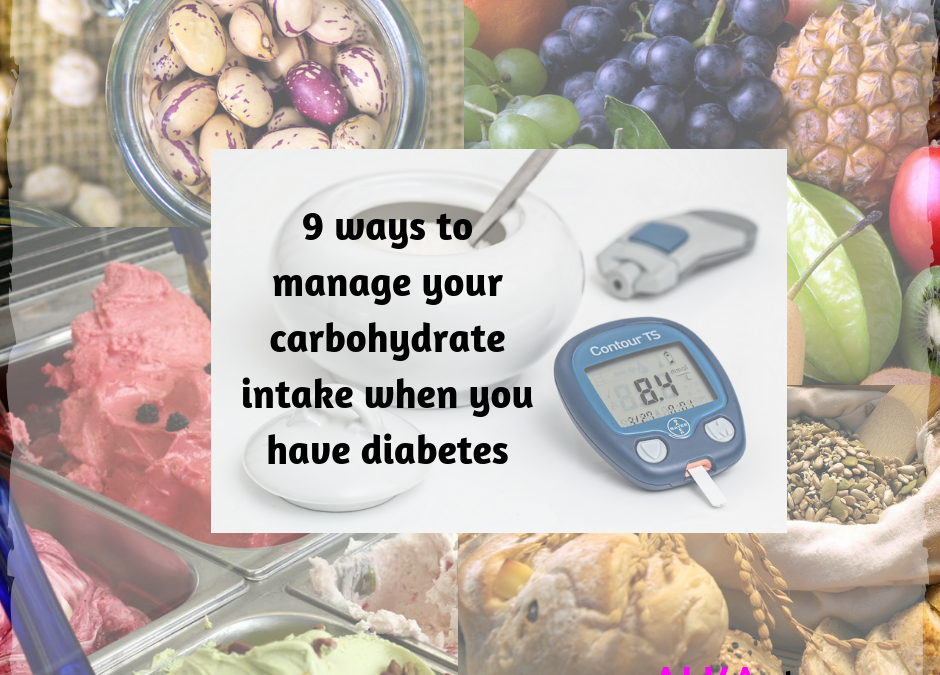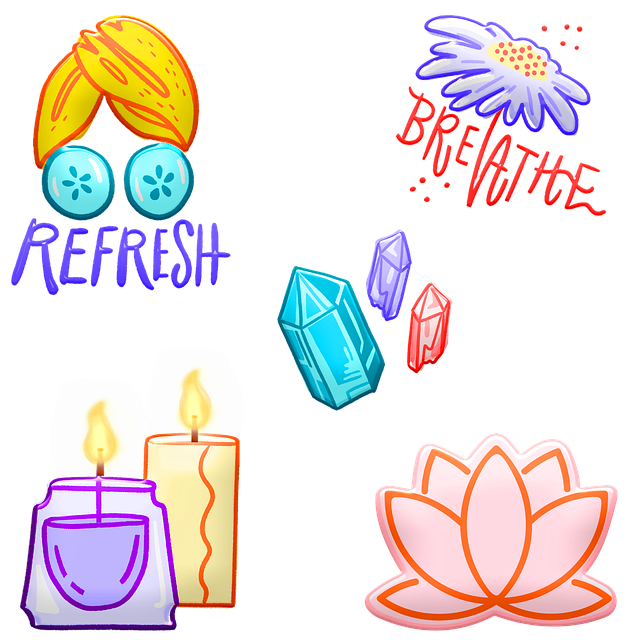What is diabetes?
Diabetes Canada (the new name for Canadian Diabetes Association) defines diabetes as a chronic, often debilitating and sometimes fatal disease, in which the body either cannot produce insulin or cannot properly use the insulin it produces. Insulin is a hormone that controls the amount of glucose (sugar) in the blood. Diabetes leads to high blood sugar levels, which can damage organs, blood vessels and nerves. The body needs insulin to use sugar as an energy source. In short when you are living with diabetes, you need to control your carbohydrate intake, since the major source of blood sugar in the body is carbohydrates.
Now, what are carbohydrates and how do they affect blood sugar? Carbohydrates make a large part of our daily meals. Foods such as breads, pasta, rice, beans, potatoes, cookies, crackers, soft drinks, pies, pastries and so on all contain carbohydrates.
Carbohydrates come in a variety of forms the most common being:
- Sugars
- Fibers
- Starches
Each one of these affect blood sugars differently. Let us see how.
Sugars: Sugar is a simple or a fast-acting carbohydrate. In simple words it means that sugars raise your blood sugars very quickly. You may want to view this video on “Blood sugar responses to various food groups” There are two main types of sugar:
Naturally occurring sugars such as those in milk or fruit
Added sugars such as those added during cooking and processing. Example in canned fruit in syrup, or in desserts, ice-cream, cookies, cakes etc
On a nutrition facts label, the number that you see for sugars includes both added and natural sugars. When reading nutrition labels look for names ending in “- ose”. That will tell you the particular ingredient is a sugar. For example glucose (also called dextrose), fructose (also called levulose), lactose and maltose. The chemical name for sugar is sucrose. Fruit sugar is fructose and the sugar in milk is lactose. Sugar also has several different names. For example include table sugar, brown sugar, molasses, honey, beet sugar, cane sugar, confectioner’s sugar, powdered sugar, raw sugar, turbinado, maple syrup, high-fructose corn syrup, agave nectar and sugar cane syrup.
Fiber: Fiber is the indigestible part of plant foods and comes from plant foods, including fruits, vegetables, whole grains, nuts and legumes. When you eat dietary fiber, most of it passes through the intestines and is not digested. The increase in blood sugar for fibre containing foods is way slower than for foods that do not contain fibre. The fibre in the food slows down the increase in blood sugar, and that is what you need to manage your blood sugar and diabetes. Adults need to try to eat 25 to 30 grams of fiber each day. Most adults do not consume nearly enough fiber in their diet. Most of us only get about half of this amount. It is a good idea to aim for this goal. Fiber also contributes to digestive health, helps to keep you regular, and helps to make you feel full and satisfied after eating. Fiber has been know to have benefit in reduction of cholesterol levels. Good sources of dietary fiber include:
Beans and legumes – black beans, kidney beans, pintos, chick peas (garbanzos), white beans, and lentils.
Fruits and vegetables, especially those with edible skin (for example, apples, corn and beans) and those with edible seeds (for example, berries).
Whole grains such as:
- Whole wheat pasta
- Whole grain cereals (Look for those with 3g of dietary fiber or more per serving, including those made from whole wheat, wheat bran, and oats.)
- Whole grain breads (To be a good source of fiber, one slice of bread should have at least 3 grams of fiber. Another check point: look for breads where the first ingredient is a whole grain. For example, whole wheat or oats.) Many grain products now have “double fiber” with extra fiber added.
Nuts — try different kinds. Peanuts, walnuts and almonds are a good source of fiber and healthy fat, but watch portion sizes, because they also contain a lot of calories in a small amount.
In general, an excellent source of fiber contains five grams or more per serving, while a good source of fiber contains 2.5 – 4.9 grams per serving. It is best to get your fiber from food rather than taking a supplement. In addition to the fiber, these foods contain many important vitamins and minerals. It is also important that you increase your fiber intake gradually, to prevent stomach irritation, and that you increase your intake of water and other liquids, to prevent constipation.
Starches: The 3rd type of carbohydrate is starch. Foods that contain starches include:
Starchy vegetables like peas, corn, lima beans and potatoes
Dried beans, lentils and peas such as pinto beans, kidney beans, black eyed peas and split peas
Grains like oats, barley and rice.
Grains are of 2 kinds: Whole and refined grain: A grain contains three parts: bran, germ and endosperm.
You can read about the parts of a grain in this post here:
The important thing to remember is that the whole grain contains the bran, germ, and endosperm and will provide you with all of the nutrients that whole grains have to offer. As a result, the increase in blood sugar when eating whole grains is very slow due to the fibre and protein. On the other hand refined grains have undergone a fair bit of processing and contain only the endosperm or the starchy part. Most of the vitamins and minerals have been removed.
Difference between whole wheat and whole grain
Common myth: whole wheat and whole grain are the same. Whole wheat flour is still refined, has undergone a fair bit of processing in which a significant portion of the germ and the bran is removed. This results is a loss in vitamins, minerals and fibre (though whole wheat does contain more fibre than white flour.) In contrast, whole grains include the whole kernel, including the bran and the germ. As a result whole grains are nutrient packed. Similar to fibre containing foods the increase in blood sugar for whole grains is way slower than refined grains. The fibre and protein in the food slows down the increase in blood sugar, and that is what you need to manage your blood sugar and diabetes.
Protip: Choose whole grains over whole whole wheat Now lets us get to the real reason of why I started writing this post i.e strategies to manage your carbohydrate intake when you have diabetes.
- Now that you know how to recognize sugars, read food labels. If there are ingredients that you do not understand on the label, do not buy the product. You cannot afford to put anything in your body that you know nothing about and don’t even recognize the name.
- Choose water over fizzy sugar-sweetened drinks to keep you hydrated. If you do not like the taste of water, invest in an infuser bottle. Slice up your favorite fruit and fill up with water. Keep refilling. You can even use sparkling water if you are crazy about the fizz.
- The simplest one – don’t keep sugary drinks in the house. If they’re not easily accessible, you can’t drink them. Save them for time out with family and friends or your vacation. In any case these drinks were never meant to be staples. They were meant as a real treat. Remember, the good old days when you were younger!
- If you really must have juice in the morning, limit to ½ cup and water it down to a 1 cup.
- Choose Unsweetened so you can control the amount of sugar being added. Example unsweetened chocolate, unsweetened oatmeal, unsweetened peanut butter, unsweetened soymilk and so on.
- Do not go “Cold turkey”. In my experience when people go cold turkey, they fall off quickly. Slow and steady wins the race. Try reducing the amount of sugar to half of what you take in your coffee, or cut back on the portion of ice-cream or cake or pudding. Give yourself a good 2 weeks for the change to sink in. If you fall off in between. Get back on track. DO NOT GIVE UP.
- Go stronger on sweet flavors like vanilla rather than on the sugar. For instance you can order an unsweetened latte and add flavor with cocoa or vanilla powder. You could skip the flavored oatmeal and add a sweet kick with cinnamon, nutmeg, and ginger. A big advantage when sprinkling on the cinnamon: according to a meta-analysis in the Journal of Medicinal Food, cinnamon has been shown to naturally regulate blood sugar, which helps control your appetite. That sure is a win win. What say!
- If you are a dessert person, set some rules for yourself for frequency, occasion and portions and stick to them. Be mindful of your actions. Before you grab that killer cheesecake, count backward from 10 to 0 and think about the past week. I promise the effect of this simple trick will be enlightening.
- Often times sugar cravings set in when you are hungry. Get in the habit of pairing protein or fat with whole grains for your main meals. This practice will control your hunger and your sugar cravings will gradually fade away.
- Do you have any strategies that you can share? Did you try any of these strategies? How was your experience?
References: https://www.hsph.harvard.edu/nutritionsource/carbohydrates/
http://www.diabetes.org/food-and-fitness/food/what-can-i-eat/understanding-carbohydrates/types-of-carbohydrates.html?referrer=https://www.google.ca/
http://www.diabetes.ca/about-diabetes/types-of-diabetes
http://www.chatelaine.com/living/whats-the-difference-between-whole-wheat-and-whole-grain/


